In the age of digital commerce, where app-based businesses have taken the world by storm, there’s one fundamental question that every stakeholder and business leader must grapple with: IAP Android vs IAP iOS – which platform holds the key to a more prosperous future?
The realm of in-app purchases (IAP) on Android and iOS platforms is more than just a technicality; it’s a strategic decision that can shape the financial destiny of a mobile application. With millions of apps vying for attention and billions of users ready to make purchases, knowing the differences and nuances between IAP on Android and iOS is not just an option – it’s a competitive necessity.
Whether you’re a developer, a product manager, or a business executive, understanding the distinctions between these ecosystems is crucial for making the right decisions that can impact your app’s revenue, user experience, and market reach.
The blog explores not just the technical disparities but also the strategic implications. What pricing models work best? How do users from each platform engage with IAP differently? Are there any significant regulatory or policy considerations to keep in mind? These are questions that our comprehensive analysis will address.
So, let’s get started!
Overview of Android IAP Implementation
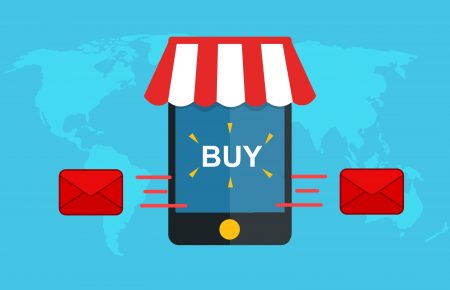
In-App Purchases are a monetization strategy that allows users to buy digital goods or services within a mobile app. This business model has become increasingly popular among app developers, as it provides a steady stream of revenue and enhances the overall user experience. On the Android platform, IAP is well-integrated and offers a seamless way for developers to enable users to make purchases, whether it’s for unlocking premium features, removing ads, or purchasing virtual items.
1. How Does IAP Work on Android?
To understand how IAP works on Android, let’s break it down into key components:
- Google Play Store Integration: The primary platform for distributing Android apps is the Google Play Store. Developers need to publish their app on this platform and configure it for in-app purchases.
- Product Definition: Developers need to define the products they want to sell within their app. These could be in the form of digital items, subscriptions, or one-time purchases.
- User Interaction: In the app, users are presented with options to make purchases. When a user decides to make a purchase, the app sends a request to the Google Play Store.
- Google Play Billing: The Google Play Billing service handles the financial transactions and connects to the user’s Google account. This ensures secure and user-friendly payment processing.
- Confirmation and Delivery: Once the payment is confirmed, the product is delivered to the user within the app. Users can immediately access or use the purchased digital item.
- Verification and Security: Android’s IAP system includes mechanisms for verifying purchases and ensuring the security of transactions. This safeguards against fraud and unauthorized use.
- Consumable and Non-Consumable Purchases: In Android IAP, developers can offer consumable items (e.g., in-game currency) that can be used up and purchased again or non-consumable items (e.g., ad removal) that are bought once and persist indefinitely.
- Subscriptions: Android IAP also supports subscription-based services, such as premium content access on a monthly basis.
- Revenue Sharing: Google Play Store takes a percentage of the revenue from in-app purchases, typically 30%, while the developer receives the remaining 70%. This is the standard revenue-sharing model for most app stores.
2. Google Play Billing Library
The Google Play Billing Library is an essential tool for developers looking to implement in-app purchases on the Android platform. This library simplifies the integration of IAP into Android applications and ensures a secure and seamless purchasing experience for users.
Key Features and Benefits:
- Simplified Integration: The Google Play Billing Library streamlines the process of integrating in-app purchases into Android mobile apps. Developers can focus on creating and enhancing their apps rather than worrying about complex payment systems.
- Improved Security: The library provides a secure way to process payments, reducing the risk of fraudulent transactions and ensuring that users’ sensitive information is protected.
- User-Friendly Experience: The library is designed to enhance the user experience. It provides a straightforward way for users to make purchases within the app and access the digital products or services they desire.
- Support for Various Purchase Types: Developers can implement various types of purchases, including one-time purchases, subscriptions, and consumable items, using the library.
- Real-Time Purchase Updates: The library enables real-time updates on purchase status, ensuring that users receive their purchased items promptly and eliminating the need for manual verification.
- Billing Client and Lifecycle Management: Google Play Billing Library includes features for managing the billing client’s lifecycle, which is crucial for ensuring that the purchase process remains smooth and error-free.
- Testing and Debugging Tools: The library also includes tools for testing in-app purchases during development, which helps developers identify and resolve issues before launching their apps.
3. Integration Steps
- Add Dependency: Developers need to add the Google Play Billing Library as a dependency in their project’s build.gradle file.
- Initialize Billing Client: Initialize the billing client in the app and set up the necessary listeners to handle the purchasing process.
- Query for Purchased Items: Query for items that the user has purchased, which can be useful for unlocking content or features in the app.
- Launch Purchase Flow: When a user decides to make a purchase, the app launches the purchase flow using the library, which then handles the payment process.
- Handle Purchase Results: Implement callbacks to handle purchase results, whether they are successful, canceled, or failed.
The Google Play Billing Library is a valuable resource for developers looking to maximize their revenue through in-app purchases on the Android platform. It simplifies the implementation process, enhances security, and improves the overall user experience, making it an essential tool for monetizing Android apps.
Advantages of In-App Purchases (IAP) on Android
1. Diverse Monetization Options
One of the key advantages of IAP on Android is the wide range of monetization options available to app developers. This flexibility allows developers to tailor their monetization strategy to suit their specific app and target audience. Here are some of the diverse monetization options offered by IAP on Android:
- Consumable and Non-Consumable Items: Android allows developers to offer both consumable and non-consumable items. Consumable items, such as in-game currency or power-ups, can be purchased repeatedly, providing a steady source of revenue. Non-consumable items, such as ad removal or premium content, are purchased once and provide long-term revenue.
- Subscriptions: Android IAP supports subscription-based services, allowing developers to offer content or features on a subscription basis. This model provides a recurring revenue stream and fosters user loyalty.
- Free Trials and Introductory Offers: Developers can provide free trial periods or introductory offers to entice users into making purchases. This approach is effective in attracting users and convincing them to commit to paid options.
- Tiered Pricing: Developers can implement tiered pricing for in-app purchases, offering users a choice of different price points and value propositions. This allows developers to cater to a broader range of users with varying budgets and preferences.
- In-App Advertising: While not a traditional IAP model, in-app advertising can be integrated with IAP to create a hybrid monetization strategy. This can include incentivized video ads, rewarded surveys, and more.
The ability to choose from these diverse monetization options empowers developers to select the strategy that best aligns with their app’s content and user base. It provides the flexibility to adapt to changing market conditions and user preferences.
2. Enhanced User Experience
IAP on Android offers several advantages that directly contribute to an improved user experience:
- Ad-Free Experiences: Users have the option to remove ads or access premium content through IAP, resulting in a cleaner and more enjoyable app experience. This ad-free experience is highly valued by users and often justifies making an in-app purchase.
- Access to Premium Features: IAP can unlock premium features or additional content, enhancing the overall functionality of the app. Users who make purchases can enjoy an enhanced app experience with advanced features and capabilities.
- Personalization: Monetization through IAP can also facilitate app personalization. Users can choose the items or features they want to purchase, tailoring their app experience to their preferences.
- Progression and Rewards: In games and other interactive apps, IAP can provide users with the ability to progress faster, obtain valuable items, or unlock exclusive rewards. This can make the app more engaging and motivating for users.
By enhancing the user experience, IAP on Android can lead to increased user satisfaction and retention. Users are more likely to engage with an app that offers valuable content and features, which can translate into higher revenue for developers.
3. App Sustainability and Long-Term Revenue
For app developers, sustainability and long-term revenue are paramount. IAP on Android provides advantages that support the ongoing success and profitability of an app:
- Steady Revenue Streams: IAP models, such as subscriptions and consumable items, can provide a consistent and predictable revenue stream. This predictability allows developers to plan and invest in app improvement and expansion.
- User Loyalty: Apps that offer value through IAP are more likely to retain users over the long term. Subscribers, for example, often commit to using an app for an extended period, leading to increased lifetime value for users.
- App Updates and Enhancements: Steady revenue from IAP enables developers to invest in regular updates, improvements, and new content. This not only keeps users engaged but also attracts new users to the app.
- Cross-Promotion and Advertising: Apps can utilize their in-app purchases to cross-promote other products, services, or apps. This can help increase visibility and revenue for related offerings.
4. User-Centric Approach
IAP on Android aligns with a user-centric approach, which is essential for long-term success. The advantages of this approach include:
- Choice and Flexibility: Users have the freedom to choose whether or not to make in-app purchases. This non-intrusive approach respects the user’s autonomy and ensures that purchases are made willingly.
- Transparency: The Android platform emphasizes transparency in pricing and payment processing. Users can easily view the prices of items and confirm their purchases before completing a transaction.
- User Empowerment: IAP empowers users to customize their app experience according to their preferences and needs. They can opt to purchase items that provide the most value to them.
- Clear Communication: Android encourages clear communication between developers and users regarding the benefits and features of in-app purchases. Users can make informed decisions based on these communications.
Overview of iOS IAP Implementation

On the iOS platform, IAP is a powerful tool that app developers can leverage to generate revenue and enhance the user experience.
1. How IAP Works on iOS?
To understand how IAP works on iOS, let’s break down the process into key components:
- Apple’s Ecosystem: The iOS platform is tightly integrated with Apple’s ecosystem, including the App Store and the user’s Apple ID. This ecosystem is essential for processing in-app purchases.
- Product Definition: Developers define the products they want to sell within their app. These products can take various forms, such as consumable items (e.g., in-game currency), non-consumable items (e.g., ad removal or additional levels), and subscription-based services (e.g., access to premium content).
- User Interaction: Within the app, users are presented with options to make in-app purchases. When a user decides to make a purchase, the app sends a request to Apple’s servers.
- Apple’s Payment Processing: Apple’s payment processing system securely handles the financial transaction, ensuring that users’ payment information is protected. Users can complete transactions using their Apple ID, which is connected to a credit card or other payment methods.
- Purchase Confirmation: Once the payment is confirmed, the purchased product or service is delivered to the user within the app. Users can immediately access or utilize the digital item.
- Receipt Validation: iOS includes mechanisms for developers to validate purchase receipts, helping to ensure that the purchase is genuine and protecting against unauthorized use or fraud.
- Consumable and Non-Consumable Purchases: Developers can offer both consumable and non-consumable items, as well as subscription-based services. This flexibility allows developers to cater to a variety of app types and monetization strategies.
- Revenue Sharing: The typical revenue distribution for Apple’s In-App Purchases (IAP) model allocates 70% to developers and 30% to Apple. It’s worth noting that for specific annual subscriptions, the distribution shifts to 85% for developers and 15% for Apple. It’s essential to remember that IAP is not intended for the sale of physical merchandise.
2. Apple’s In-App Purchase Framework
Apple’s In-App Purchase framework is a critical component of IAP on iOS. This framework provides the tools and resources that developers need to implement in-app purchases seamlessly and securely. Here are some key features and benefits of Apple’s In-App Purchase framework:
- Streamlined Integration: The framework simplifies the integration of IAP into iOS applications. Developers can focus on creating compelling app content and features without getting bogged down in complex payment processing systems.
- Secure Payment Processing: Apple’s In-App Purchase framework ensures secure and reliable payment processing, instilling confidence in users that their financial information is protected.
- User-Friendly Experience: The framework is designed with the user in mind, offering a straightforward way for users to make purchases within the app. This user-friendly experience is key to successful monetization.
- Subscription Support: The framework fully supports subscription-based services, enabling developers to offer recurring revenue models such as monthly or annual subscriptions.
- Real-Time Purchase Updates: Developers can implement real-time updates on purchase status, allowing users to receive their purchased items promptly and providing transparency in the purchase process.
- Testing and Debugging Tools: Apple’s framework includes tools for developers to test in-app purchases during development, helping to identify and resolve issues before the app is released to the public.
- Receipt Validation: The framework includes APIs for developers to validate purchase receipts, which is crucial for maintaining the integrity of in-app purchases and safeguarding against fraudulent activity.
- Pricing Tiers: Developers can set pricing tiers for in-app purchases, offering users a range of options to suit their preferences and budgets.
- App Store Connect: App Store Connect is Apple’s platform for managing in-app purchases, providing developers with insights into their app’s performance, user engagement, and financial data.
The integration of Apple’s In-App Purchase framework simplifies the process of implementing in-app purchases, provides a secure environment for financial transactions, and offers the tools needed to manage and optimize monetization strategies.
3. Integration Steps
- Enable In-App Purchases: Developers enable in-app purchases for their app within App Store Connect, the platform for managing apps on the App Store.
- Define Products: Define the digital products or services that will be offered as in-app purchases. These products can be configured within App Store Connect.
- Implement Purchases: Integrate the In-App Purchase framework into the app’s code to facilitate the purchase process.
- Testing: During development, developers can test in-app purchases using Apple’s testing environment, allowing them to simulate various purchase scenarios.
- Receipt Validation: Developers can implement receipt validation to ensure that purchases are genuine and protect against unauthorized use.
- Release and Monitor: Once the app is released, developers can monitor in-app purchase performance, track user engagement, and adjust pricing or offerings as needed.
Advantages of In-App Purchases (IAP) on iOS
1. Enhanced Monetization Opportunities
One of the primary advantages of IAP on iOS is the diverse range of monetization opportunities it provides to app developers. This flexibility allows developers to select the monetization strategy that best aligns with their app’s content and target audience. Here are some of the key monetization opportunities available through IAP on iOS:
- In-App Purchases for Virtual Items: Developers can offer virtual items within their apps, such as in-game currency, power-ups, or customization options. Users can make purchases to enhance their in-app experience.
- Unlocking Premium Features: IAP can unlock premium features within an app, allowing users to access advanced functionality, remove ads, or gain additional content.
- Subscription-Based Services: iOS fully supports subscription-based services, enabling developers to offer content or features on a subscription basis. This model provides a recurring revenue stream and fosters user loyalty.
- Consumable and Non-Consumable Items: Developers can offer both consumable and non-consumable items. Consumable items are used up and can be purchased repeatedly, providing a steady source of revenue. Non-consumable items are purchased once and provide long-term value to users.
- Tiered Pricing: Developers can implement tiered pricing for in-app purchases, offering users a choice of different price points and value propositions. This allows developers to cater to a broader range of users with varying budgets and preferences.
- Cross-Promotion and Advertising: Apps can utilize their in-app purchases to cross-promote other products, services, or apps, increasing visibility and revenue for related offerings.
2. Improved User Engagement and Experience
IAP on iOS contributes to an improved user experience, driving user engagement and satisfaction. Here’s how:
- Ad-Free Experiences: Users have the option to remove ads or access premium content through IAP, providing a cleaner and more enjoyable app experience. This ad-free experience is highly valued by users and often justifies making an in-app purchase.
- Access to Premium Features: IAP can unlock premium features or additional content, enhancing the overall functionality of the app. Users who make purchases can enjoy an enhanced app experience with advanced features and capabilities.
- Personalization: Monetization through IAP can facilitate app personalization. Users can choose the items or features they want to purchase, tailoring their app experience to their preferences.
- Progression and Rewards: In games and other interactive apps, IAP can provide users with the ability to progress faster, obtain valuable items, or unlock exclusive rewards. This can make the app more engaging and motivating for users.
3. Sustainable and Predictable Revenue
For app developers, achieving sustainable and predictable revenue is essential for long-term success. IAP on iOS offers several advantages that support this goal:
- Steady Revenue Streams: IAP models, such as subscriptions and consumable items, can provide a consistent and predictable revenue stream. This predictability allows developers to plan and invest in app improvement and expansion.
- User Loyalty: Apps that offer value through IAP are more likely to retain users over the long term. Subscribers, for example, often commit to using an app for an extended period, leading to increased lifetime value for users.
- App Updates and Enhancements: Steady revenue from IAP enables developers to invest in regular updates, improvements, and new content. This not only keeps users engaged but also attracts new users to the app.
- Cross-Promotion and Advertising: Apps can use their IAP offerings to promote other products, services, or apps, increasing visibility and revenue for related offerings.
IAP Android vs. IAP iOS: The Key Differences
1. IAP Android Vs IAP iOS: App Store Ecosystem
Android’s IAP operates within a more open ecosystem. Android’s app store, Google Play, is known for its inclusivity, where app submissions and updates have relatively lower barriers to entry compared to iOS. Developers appreciate the flexibility to experiment and iterate more rapidly.
iOS, on the other hand, operates within a controlled ecosystem. The Apple App Store is known for its strict guidelines and thorough review process, which can make it challenging for developers to publish and update apps. Apple’s strict control over the ecosystem ensures a high level of quality and security, but it can be a double-edged sword for developers.
- Review Process: iOS’s rigorous app review process ensures high-quality apps but can lead to delays and rejections for developers. Android’s review process on Google Play is more lenient, allowing for faster updates.
- App Visibility: Android offers greater visibility for new apps and updates, thanks to its open nature, whereas iOS features a curated storefront with a limited number of apps featured prominently.
- Monetization Flexibility: Android’s openness allows developers more freedom to experiment with various monetization strategies. iOS’s controlled ecosystem enforces strict policies that can limit certain monetization approaches.
2. IAP Android Vs IAP iOS: App Discovery and Distribution
App discovery on Android is characterized by a wide range of app marketplaces beyond Google Play. While Google Play is the primary store, Android users can also install apps from third-party app stores and directly via APK files. This accessibility provides multiple avenues for users to discover and access apps.
On iOS, the Apple App Store is the sole distribution channel. While this centralized approach ensures security and trust, it limits users’ options for discovering and installing apps. The App Store’s curated nature also makes it challenging for new and smaller developers to gain visibility.
- App Store Exclusivity: iOS apps are exclusive to the Apple App Store, while Android apps can be distributed through a variety of channels, allowing for greater flexibility in distribution.
- App Discovery: Android users have more options for app discovery due to the availability of third-party app stores, which can lead to more diversified sources of app recommendations.
- Security vs. Accessibility: iOS prioritizes security and user trust by limiting distribution to the App Store. Android balances accessibility with potential security concerns, given the availability of third-party sources.
3. IAP Android Vs IAP iOS: Monetization Models
Both Android and iOS support a range of monetization models for in-app purchases, such as subscriptions, one-time purchases, and advertising. However, the specific implementation and requirements can differ between the two platforms.
Android offers a higher degree of flexibility in terms of monetization. Developers can choose from various payment gateways, enabling diverse payment methods. The platform also allows developers to link to external websites for purchases, offering more freedom in payment processing.
In contrast, iOS enforces Apple’s payment processing system for in-app purchases, requiring developers to use Apple’s payment gateway. Apple takes a 30% commission on transactions, although this rate may vary for certain circumstances. This centralized approach simplifies payment processing but limits payment options and may affect developers’ revenue share.
- Payment Processing: Android provides developers with more flexibility to choose payment gateways, while iOS mandates the use of Apple’s payment system.
- Payment Options: Android users have more payment options, including carrier billing, gift cards, and various payment gateways. iOS users typically use Apple Pay for in-app purchases.
4. IAP Android Vs IAP iOS: Global Market Share and User Demographics
The market share and user demographics of Android and iOS can significantly influence the decision of app developers regarding platform prioritization.
Android boasts the largest global market share, with a diverse user base across various income levels. It is the preferred platform in emerging markets and enjoys a strong presence in regions like Asia, Africa, and South America.
iOS has a smaller but financially affluent user base, making it a preferred choice for users in higher-income regions like North America and Europe. iOS users are more likely to spend on apps and in-app purchases.
- Market Share: Android has a significantly larger global market share compared to iOS, which is more concentrated in specific regions.
- User Spending: iOS users tend to spend more on apps and in-app purchases, while Android users may have more free app options.
- Target Audience: Developers need to consider the target audience and regional presence when choosing between Android and iOS.
5. IAP Android Vs IAP iOS: App Development and Publishing Costs
The costs associated with app development and publishing can vary significantly between Android and iOS.
Developers often find Android development to be cost-effective due to lower development costs, lower publishing fees, and a more lenient app review process. The open nature of Android allows developers to experiment with different monetization models and strategies.
iOS development can be more expensive due to the need for specialized skills in Swift or Objective-C, as well as adherence to Apple’s strict design and quality guidelines. Additionally, iOS developers may incur higher publishing fees and a 30% commission on in-app purchases.
- Development Costs: Android development is generally associated with lower development costs, making it more accessible to a broader range of developers.
- Publishing Fees: iOS developers may incur higher publishing fees and revenue-sharing costs compared to Android developers.
- App Review Process: iOS’s rigorous app review process can lead to additional development costs to meet Apple’s quality and design standards.
6. IAP Android Vs IAP iOS: Fragmentation and Device Compatibility
App developers must consider fragmentation and device compatibility when creating apps for Android and iOS.
Android’s open ecosystem has led to a wide array of device manufacturers, screen sizes, resolutions, and hardware capabilities. This diversity can present challenges in optimizing apps for a broad range of Android devices.
iOS, with its limited device lineup, offers a more controlled environment for app development. Developers can focus on optimizing their apps for a smaller range of Apple devices, resulting in a more consistent user experience.
- Device Compatibility: Android apps need to account for a wider range of device specifications, potentially requiring additional development efforts for optimization.
- Consistency: iOS offers a more consistent user experience, as developers can target a more homogenous set of Apple devices.
IAP Android Vs IAP iOS: Best Practices
1. Offer Value-Driven IAP Options
When implementing IAP on both Android and iOS, it’s essential to provide IAP options that offer tangible value to users. Ensure that the items or features available for purchase enhance the user experience and are relevant to the app’s core functionality. Whether it’s in-game power-ups, ad removal, or premium content, the IAP should be seen as valuable enhancements, not forced obligations.
- Conduct user research to understand what features or items users are most interested in purchasing.
- Create IAP packages that align with user preferences and the app’s core value proposition.
- Clearly communicate the benefits and value of each IAP to users.
2. Transparent Pricing and Descriptions
Transparency is key when it comes to IAP pricing and descriptions. Users should be able to easily identify the costs associated with in-app purchases, and they should receive detailed information about what each purchase includes. This transparency not only builds trust but also reduces the likelihood of refund requests and user dissatisfaction.
- Clearly display the prices of IAP items and any applicable taxes.
- Provide concise and informative descriptions of what users will receive with each IAP.
- Avoid using misleading or confusing pricing structures.
3. Frequent and Appropriate IAP Prompts
The timing and frequency of IAP prompts are critical to the user experience. Avoid bombarding users with purchase requests or interrupting their engagement with the app. Instead, use IAP prompts judiciously and at moments when users are most likely to find value in making a purchase.
- Implement contextual IAP prompts during natural breakpoints in the user experience, such as after an accomplishment or during a content upgrade.
- Allow users to dismiss IAP prompts without hindering their app usage.
- Utilize smart and data-driven prompts that target users who are more likely to make purchases.
4. Respect User Choice and Privacy
Respecting user choice and privacy is paramount in maintaining user trust. IAP should always be an optional feature, and users should not feel pressured or compelled to make purchases. Furthermore, developers must adhere to privacy guidelines and ensure that user data is handled securely and transparently.
- Make IAP entirely optional, and provide a free and functional version of the app.
- Obtain explicit user consent for any data collection related to IAP or targeted advertising.
- Comply with data privacy regulations and provide clear privacy policies.
5. Implement Reliable Payment Systems
On both Android and iOS, it is crucial to implement reliable payment systems for IAP. Users should have confidence that their financial information is secure, and transactions should be processed without errors or issues. For iOS, this means using Apple’s payment processing system, while on Android, developers have more flexibility in choosing payment gateways.
- On iOS, use Apple’s payment processing system to ensure a secure and seamless payment experience.
- On Android, select reputable payment gateways and maintain a transparent and reliable payment process.
- Regularly test payment transactions to identify and resolve any issues.
6. Regularly Update and Improve IAP Offerings
To keep users engaged and coming back for more, it’s essential to regularly update and improve IAP offerings. This can include introducing new items, features, or bundles, as well as responding to user feedback and preferences. Continuously evolving IAP offerings not only drive revenue but also foster user loyalty.
- Monitor user feedback and behavior to identify areas for improvement in IAP offerings.
- Introduce seasonal or themed IAP promotions to maintain user interest.
- Stay abreast of industry trends and user preferences to ensure IAP remains competitive.
7. User-Friendly Purchase Process
Both Android and iOS platforms offer a user-friendly purchase process, but developers must ensure that it remains as smooth and frictionless as possible. Avoid any unnecessary steps or complications that may discourage users from completing their purchases.
- Minimize the number of clicks and screens required to complete a purchase.
- Implement features like fingerprint or facial recognition for secure and efficient authentication.
- Continuously test the purchase process to identify and resolve any issues or bottlenecks.
8. Customer Support and Refund Policies
Providing reliable customer support and clear refund policies can significantly enhance the user experience and build trust. Users who encounter issues or have concerns about their purchases should have access to responsive and helpful support, while refund policies should be fair and transparent.
- Offer a visible and accessible support channel for users to report issues or seek assistance with their IAP.
- Ensure that refund policies are communicated clearly and followed consistently.
- Train support staff to handle IAP-related inquiries effectively and empathetically.
9. Analyze and Optimize Performance
Performance analysis and optimization are key to long-term success in IAP implementation. Developers should regularly analyze the performance of their IAP offerings, identifying trends and patterns in user behavior and purchase activity. This data-driven approach allows for continuous optimization and adjustment to maximize revenue.
- Use analytics tools to track user engagement and conversion rates related to IAP.
- Set up A/B testing for different IAP options to determine which ones perform best.
- Regularly review and update IAP strategies based on data-driven insights.
10. Legal and Compliance Considerations
Ensuring legal and compliance adherence is essential to maintain a positive reputation and prevent potential legal issues. Both Android and iOS platforms have specific guidelines and policies that developers must follow, and failure to do so can result in app removal or other consequences.
- Familiarize yourself with the specific guidelines and policies for IAP on both Android and iOS.
- Stay up to date with any changes in these policies and adapt your IAP offerings accordingly.
- Consult with legal experts or compliance specialists to ensure full adherence.
The Bottom Line
Undoubtedly, the implementation of In-App Purchases (IAP) on both Android and iOS platforms is a strategic approach for mobile app developers to achieve a balance between revenue generation and user satisfaction. Adhering to best practices, such as offering value-driven IAP options, ensuring transparent pricing and descriptions, respecting user choice and privacy, and implementing reliable payment systems, is fundamental to building user trust and driving IAP revenue.
Developers should also consider the importance of regular updates and improvements to IAP offerings, user-friendly purchase processes, robust customer support, and clear refund policies. Performance analysis and optimization, as well as legal and compliance considerations, play a critical role in the long-term success of IAP implementations.
Moreover, to simplify the process of offering In-App Purchases and monetizing mobile apps, Muvi One, an innovative OTT platform provider, offers comprehensive solutions that cater to streaming businesses on both Android and iOS. By providing a range of tools and support for IAP implementation, Muvi One ensures a seamless and user-friendly experience for both developers and users, ultimately making it easier for businesses to capitalize on the advantages of In-App Purchases in the competitive world of mobile apps and streaming content.
Take a 14-day free trial to know more.
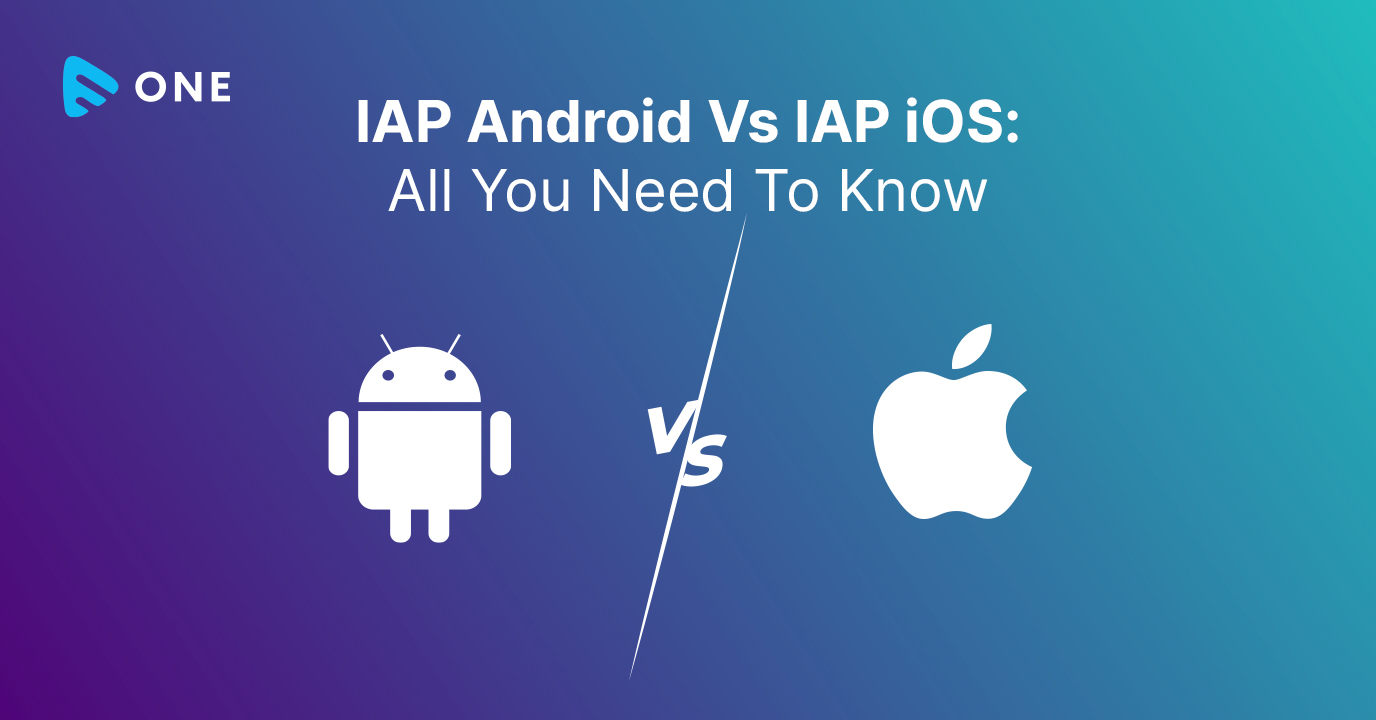





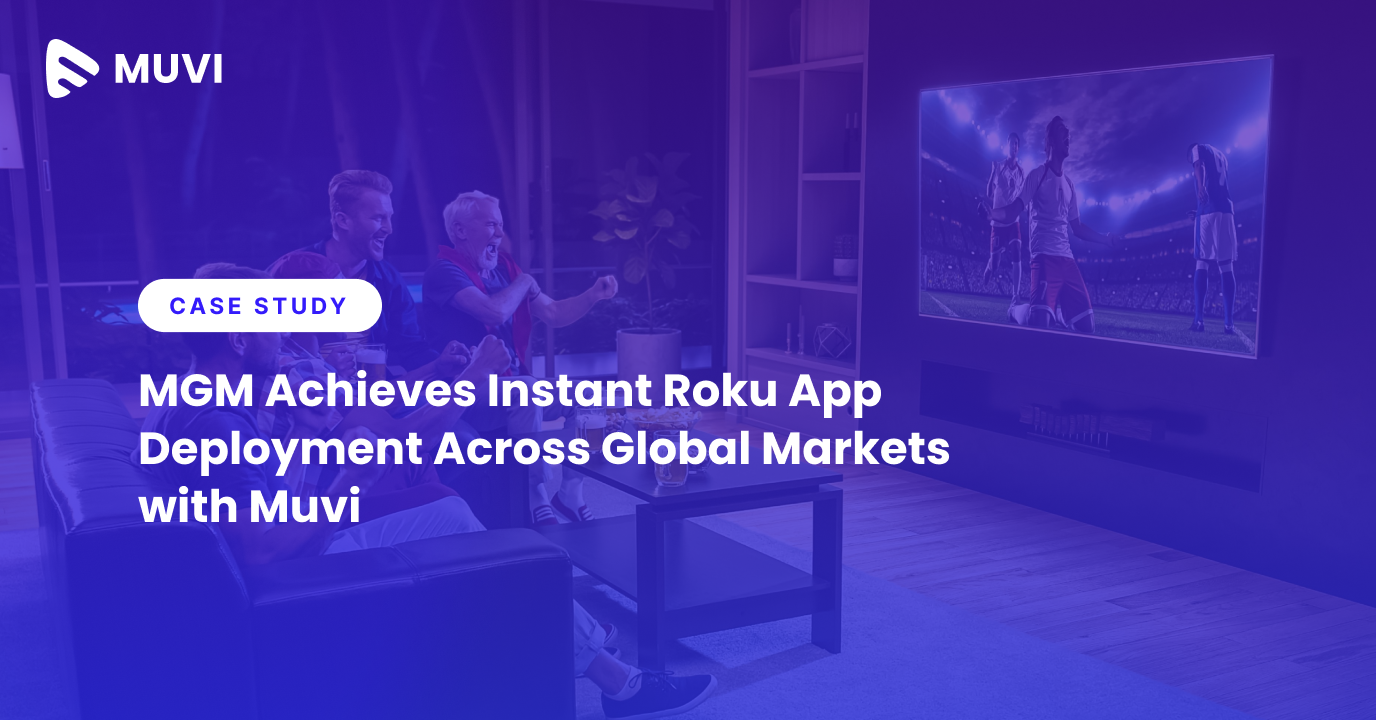




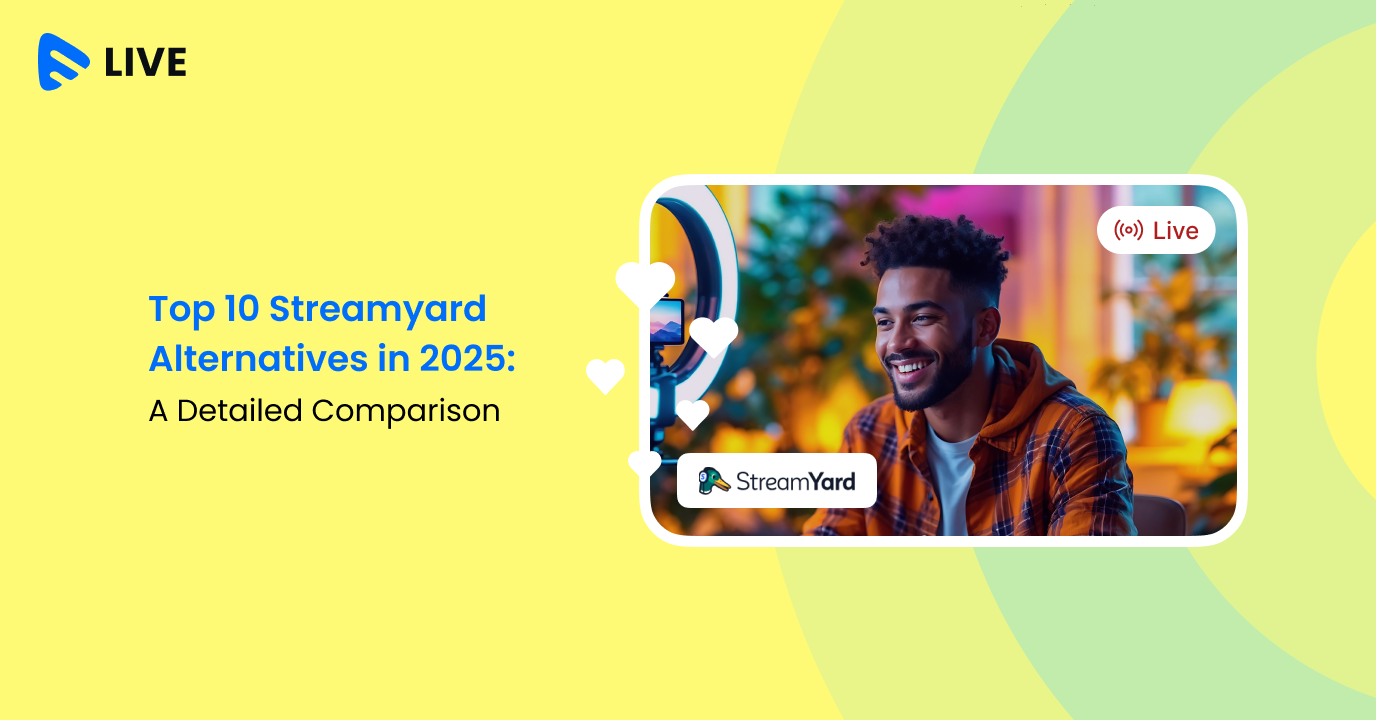
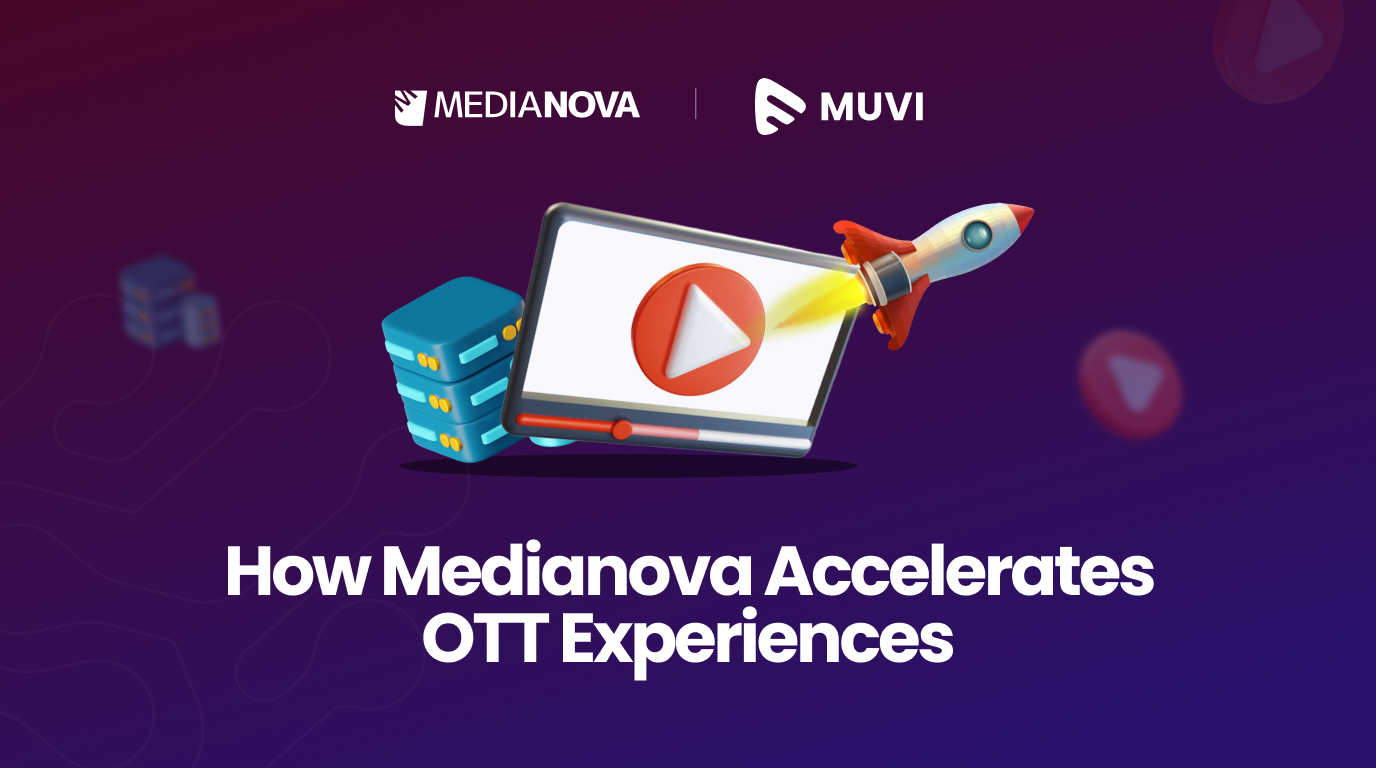



Add your comment